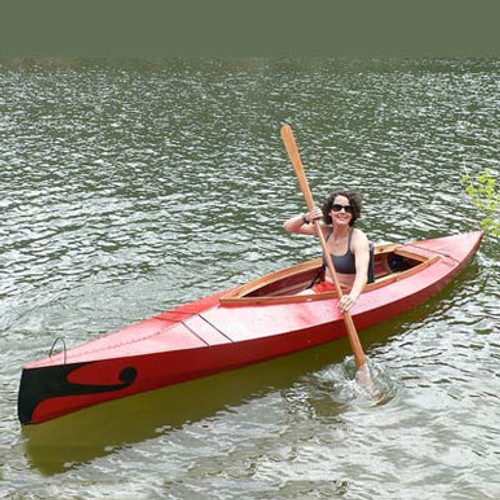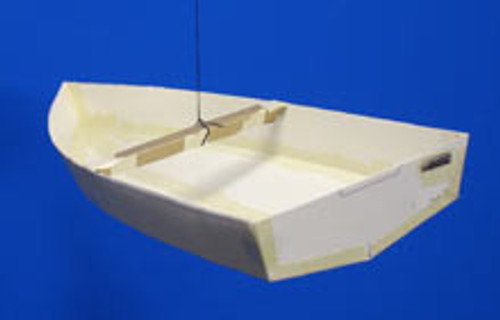Phoenix 15 – A boat for Sail, Oars and Small Outboard
Click HERE to download the instructions for Phoenix 15 which Ross Lillistone figures will work as a free study plan for this boat.
“What do you mean by a beach cruiser?’ inquired Briggs.
“It means a boat to cruise along the beaches in shallow water,” Goddard replied, “a boat to sleep aboard when hauled out on the beach, and I can tell you that this is an interesting and risky sort of cruising. It takes skill and experience to sail close to the shore if it is a rock region and there is a sea running, but you can visit many unfrequented places in a beach cruiser. Of course, there are sheltered waters in the rivers and marshes where there is no danger...." (The Compleat Cruiser by L. Francis Herreshoff – Sheridan House 1956 Library of Congress Catalog Card Number: 56-12511)
When I first read the words quoted above back in 1980 I had already been beach cruising for fifteen years, even though I didn’t know that was what it was called. Being fortunate enough to have been brought-up on the shores of Moreton Bay in southern Queensland in a family interested in wooden small-craft I was blessed from the beginning.
At the time of my first reading of the wonderful book from which I quote, I was spending my spare time day-sailing and beach cruising the shores near Townsville in tropical North Queensland, around places such as Magnetic Island. The conditions in the region provided plenty of adventure and some danger due to the underwater inhabitants and the robust sea conditions.
However, my initial beach cruising adventures were modest, and carried out in tin canoes, in very small sailing boats such as the wonderful Charles G. MacGregor-designed Sabot, and a variety of old flat-bottomed rowing and outboard boats. As fate would have it, in 1974 I inherited a 15foot 2-1/2inch x 6ft cruising dinghy designed and built by my late father, Victor Ross Lillistone. She was conceived specifically for cruising and day-sailing, constructed from marine plywood over Western Red Cedar framing and longitudinal stringers. The narrow flatbottom was from ½ inch ply and the four batten-seam planks each side were from ¼ inch ply. The glue was Resorcinol and the fastenings silicon-bronze. She is still sailing today, and is being used by the fourth generation of our family. Her name is ‘Phoenix’.
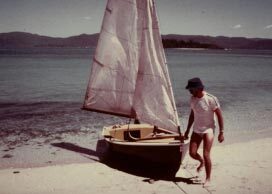
Phoenix in earlier days
I’ve done some pretty adventurous things in my life, but beach-cruising and day-sailing in simple dinghies has remained one of my greatest sources of satisfaction, and at age seventy, I intend to continue the activity for as long as I am physically able. All of this can be done by just about anybody, in a boat which they have built for themselves, at a small fraction of the cost of an off-the-shelf production boat.
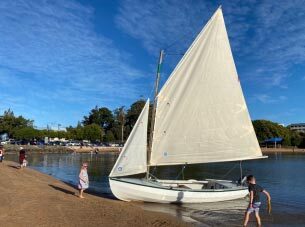
Phoenix as she is today
Phoenix II
By about the year 2000, in the endless search for the ‘Perfect Boat’, I settled on the proportions that I felt were just right for beach cruising – 15ft x 5ft x 6ins (4.5m x 1.5m x 150mm). Enough length for a good displacement speed, fine entry lines to slice through a steep chop, narrow enough for light weight and efficient rowing with oars of a modest length, and shallow enough to be able to manoeuvre the boat over a reef or sand bank. A lightly built boat with these proportions would be able to carry three adults plus gear on protected waters, be effective as a beach-cruiser and day-sailer with two, and still be capable of being moved easily on the beach and sailed effectively by a solo skipper. On top of all that she should have provision for a realistic sleeping spot.
In early 2003 I was approached by a customer who has since become a long-term friend. His name is Paul Hernes, and he became the builder of the prototype of my beachcruising/day-sailing design named ‘Phoenix III’. Since then, more than 300 sets of plans (and counting) have been purchased, with the design having been built world-wide.
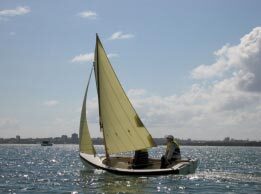
Phoenix III sailing under the
power of her sloop rig with a
spritsail main
Phoenix III is constructed using the Glued-Lapstrake (i.e. Clinker) method, resulting in a hull which has a high strength-to-weight ratio, and even more importantly, a high stiffness-to-weight ratio. The epoxy-glued hull seams remain watertight for life, and for such a complex shape, the boat is relatively simple to build – forgiving work for an amateur who reads the extensive instruction manual, and speedy work for a professional.
To read further, download the Free Study Plans for Phoenix 15







